Park Jong-gil, Nial and Charlie Moores
On September 16th 2004, Park Jong-Gil found and photographed a striking first-year shrike on Hong Island in the far southwest of the country. Believing from field views that the bird was most likely to be a Red-backed Lanius collurio (or possibly an Isabelline L. isabellinus) Shrike - neither species of which has been recorded in South Korea before - he set his nets, caught the bird and took detailed measurements.
As the photographs below show, from close inspection in the hand the tail feathers showed obvious dark subterminal marks, a feature not shown by the regularly-occurring Brown Shrike Lanius cristatus, while several measurements also fitted Red-backed (or Isabelline Shrike ) rather better than Brown.
Looking at the spread wing, focus fell on P5. Svennson (1992) states that Red-backed Shrike never shows emargination on this primary - while Isabelline apparently does. The images do seem to show some narrowing from a relatively broad base: enough "emargination" to eliminate Red-backed? Further research has led to an illustration of a Red-backed Shrike in Jenni L. & R. Winkler 1994 which clearly shows that P5 narrows or tapers towards the tip - and which looks very similar indeed to the Hong Island individual.
Lacking adequate experience of these shrikes, which as previously stated would be first-records for the country, we would very much welcome all any any informed opinion and advice. As always, all contributions will be posted and acknowledged (please email wbkenglish@aol.com):
In- hand measurements taken by Park Jong-gil:
Total lengths: 184.0mm / Wing length: 91.5mm / Tail: 82.5mm /
Tail width. 6th TF measured 20mm from tip 8.5mm.
Tarsus: 25.5mm / Bill (to skull): 17.5mm / Head-bill Length: 37.6mm
Bill Width (at nostril): 6.1mm / Bill Depth (at nostril): 7.4mm
Weight: 31.4g.
Wing formula: 3 > 4 > 5 > 2 > 6 > 7 > 8 > 9 > 10 >1 (Ascendent numbering)
Lefranc, N. and Worfolk (1997) indicate in collurio 2nd primary is generally longer than 5th, but in this individual the 5th primary is longer than 2nd (30.0mm).
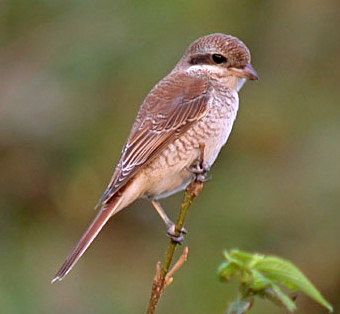
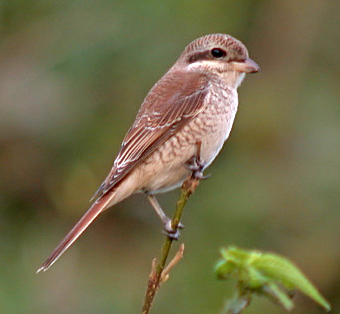
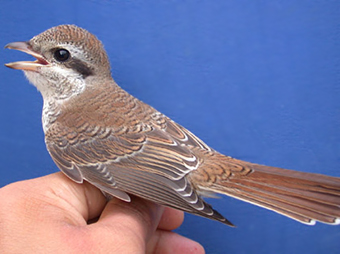
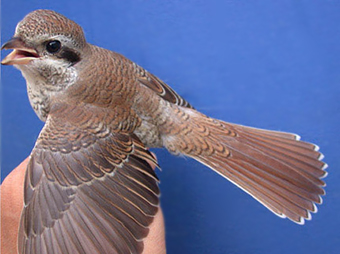
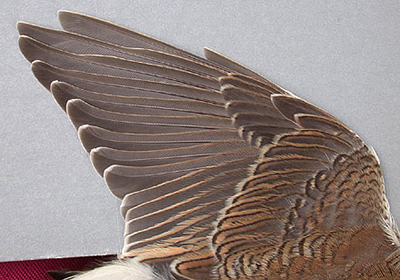
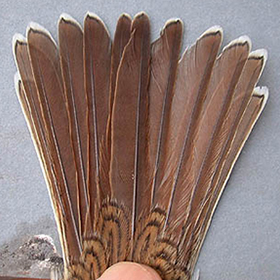
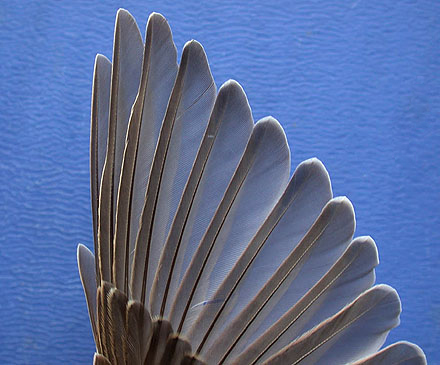
References:
- Jenni L., & R. Winkler (1994). Moult and ageing of European Passerines. Academic Press.
- Svensson, L. (1992). Identification Guide to European Passerines.
Update
29 September, Bo Petersson: Bo, a very experienced bander in Sweden,who has apparently handled a fair number of Red-backed Shrikes as well an Isabelline Shrike there, states that in his opinion it is "without doubt" a Red-backed Shrike. Other positive feedback from another very well-respected bander in the United Kingdom, with less direct experience of Red-backed Shrike or the other closely-related shrikes however, also firmly supports Park Jong-Gil's initial identification.
01 October, Dr. Reuven Yosef, Director, International Birding & Research Centre in Eilat: "I would like to confirm that the bird ringed was a Red-backed Shrike. I suspect a first-year bird. I have ringed a couple of 1000s of R-b S and several Isabellines on migration at Eilat, Israel."



